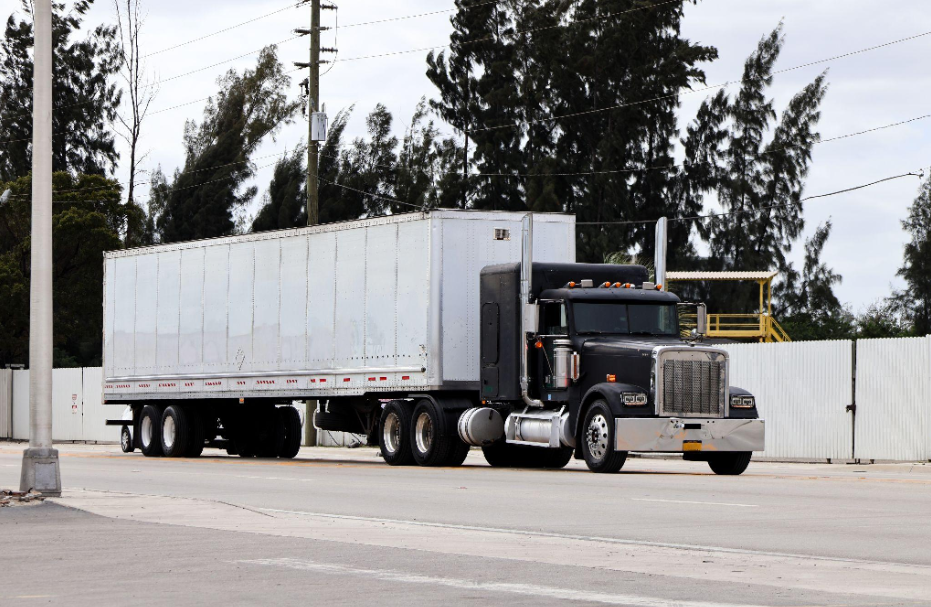Compliance plays a pivotal role in the evolving world of freight and logistics. Adhering to U.S. regulations for moving your freight brings ease and non-compliance rise penalties, delivery windows, and customer expectations.
For many U.S. truckers and fleet owners, the paperwork takes long hours with lengthy form filing and unnecessary stress.
But as the technology is progressing, the advancements in the industry works fast and efficiently, allows to bridge the gap with simplified documentation process, and preventing costly mistakes due to manual paperwork. May it be mobile apps or cloud-based platforms, these advanced tools are changing how drivers interact with freight documentation and comply to adhere the guidelines.
In this blog, we will explain how technology is making compliance easier.
The Importance of Technology in Modern Freight Compliance
Freight compliance was once managed through stacks of logs and handwritten form-filing, but today adhering to regulations is necessary because it demands accurate tracking, and instant data access.
- Additionally, technological advancements assist a trucker with Hours of Service (HOS) tracking.
- Electronic DVIRs (Driver Vehicle Inspection Reports).
- Lower the risk of human error and minimizes deadlines.
Common Challenges Truckers Face With Tech Adoption
As technology is transforming the way of processing documentation, not all drivers are ready for the change. For many truckers who are working for decades, adapting to new high-tech tools feels like a challenge.
Here are the reasons:
- Limited digital literacy
All drivers are not accustomed to complex mobile apps or platforms, So uploading documents, or accessing tools are difficult processes for them.
- Connectivity issues on the road
Weak signals in remote areas can interrupt real-time updates, causing delays in accessing data for documentation.
- Confusing app menus
Complex interfaces can frustrate drivers who prefer clear & easy navigation.
- Compatibility issues across devices
Not every app works seamlessly on all smartphone interfaces, especially when the operating system isn’t in sync with the hardware.
How Are Smart Tools Simplifying Freight Compliance?
The rules are getting tougher and the paperwork more complicated. That is why more and more truckers are resorting to mobile apps to automate their tasks. These intelligent applications are integrated in daily driving operations, enabling drivers to adhere to requirements without additional strain.
Whether you want to stay compliant on IFTA (International Fuel Tax Agreement) filings or want real-time access to freight documentation during audits, technology can make your work easy without extra hassle.
Let’s take a look at some of them:
- Apps for document uploads
Drivers can click a photo of a bill or inspection form and upload it instantly, removing the need to carry physical copies.
- Cloud systems for instant access
Critical documentation is ready when you need it, whether at docks, during audits, or at roadside inspections.
- Permit renewal alerts
A lot of softwares come with reminders and are fully integrated with a trucking permit service, which means there’s no delay in handling renewals or applications. This allows you to keep compliance on target while continuing day-to-day business as usual.
- GPS for route tracking
These systems support the optimization of routes, as well as ensure that the compliance data matches the delivery logs.
- E-signatures to cut delays
Digital signatures help accelerate processing times and clear bottlenecks.
What Makes Tech a Game-Changer for Freight Documentation?
It has for some time been incredibly frustrating: an incorrect log, a double-up, a form not filled properly, all could result in penalties/ fines or depleted hours. But technology is changing that story by stripping the friction out of everyday compliance.
- Instant document uploads
Drivers can upload documents from their phone in seconds, instead of mailing paperwork, which keeps the records updated.
- Automated log entries
ELDs (Electronic Logging Devices) can record driving hours of the truck drivers without manual input, reducing the chance of errors.
- Cloud access from anywhere
Drivers and fleet managers can view essential records anytime. These systems helps in managing documents including reports, trip logs, and freight documentation in one secure location. Moreover, it not only improves coordination but also ensures that information is accessible during audits, which enhances transparency.
- Digital inspection readiness
During a roadside inspection, digital files are easier to check, avoiding the risk of outdated reports.
- Fewer paperwork errors
Features including, built-in checks and system prompts reduce common mistakes, which enables smoother operations.
Final Thoughts
As the technology is shaping how freight compliance is done and documentation is maintained, the adoption may feel challenging at first, but the long-term benefits and peace of mind are worth it. For truckers navigating a fast-changing regulatory landscape, embracing the right digital tools can turn compliance from a burden into a manageable part of the job.
If you’re looking to stay ahead in this dynamic industry, having the right support matters. That’s where a reliable partner like Personal Truck Services can make all the difference. Its permit services protect your journey from unwanted problems and ensure you’re covered every mile of the way.





